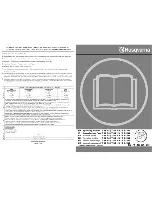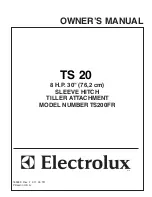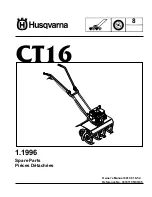
81
3.
Allow the pressure to equalize in the two
casings, if necessary, by opening seal
flush line interconnected valve.
4.
Unlock the discharge valve as per
instructions below.
5.
Unlock the suction valve as per
instructions below.
NOTE:
Keep hands and tools away from
locked suction valve arm, as the differential
pressure may cause the arm to rotate quickly
with force when unlocked.
6.
Close the seal flush line interconnect
valve and restart pump.
Valve Operation
- Refer to following 3”, 4”
& 6” valve illustration and the 8” valve
illustration.
Discharge Valve
This valve performs the dual function of
automatically sealing the discharge of the
inactive pump when one pump is running and
can manually be closed and locked to isolate
one pump for service.
Automatic Flapper Operation
In the flapper mode the two halves of the
discharge
valve
are
free
to
pivot
independently under normal
operating
conditions. The locking handle (3) should be
secured with the set screw (11) in the vertical
position with the center pin of the locking
arm (4) trapped by the locking handle (3).
Manual Valve Locking
The locking feature of this valve is to ensure
a positive seal (leak proof) of the discharge
port on the pump to be serviced.
Note:
Ensure the pump to be isolated is not
operating before attempting to release the
locking mechanism. Failure to do so may
result in injury to the operator and/or damage
to the pump.
Locking
1.
Loosen discharge side set screw (11) to
release the locking handle (3).
2.
Rotate the discharge side locking handle
(3) so that the handle points toward the
pump to be serviced and secure in the
horizontal position, using set screw (11).
This releases the discharge locking arm
(4).
3.
Rotate discharge valve shaft (16) towards
the pump to be isolated. The orientation
of the shaft is indicated by the center pin
on the locking arm (4).
4.
Raise the locking handle (3) so that the
cam on the base of the handle forces the
pin of the locking arm (4) towards the
pump to be isolated. The locking handle
(3) should be raised to between 45
degrees and the vertical position.
5.
Tighten set screw (11) to lock the locking
handle (3) in position.
This handle should not be rotated past the
vertical position.
Note:
Ensure the isolated pump is not
operating before attempting to release the
locking mechanism. Failure to do so may
result in injury to the operator and/or damage
the pump.
Unlocking
1.
Open the interconnecting valve on the
seal flush line to pressurize the serviced
pump and vent air through bleeder valve
on series 4302
2.
Close these valves once the pressure is
equalized and air removed.
3.
Loosen set screw (11) and lower locking
handle (3) to the horizontal position,
secure with set screw (11).
4.
Rotate valve to center position so that the
center pin of the locking arm (4) locates
in the recess on the locking handle (3).
5.
Loosen set screw (11) and raise locking
arm (3) to the vertical position, locking
Summary of Contents for LZ Series
Page 2: ......
Page 27: ...27 Figure 6 Concrete Pad Mounting with Dimensions Figure 7 LZ Base ...
Page 36: ...36 Figure 17 Typical Flue Vent Piping ...
Page 83: ...83 ...
Page 84: ...84 ...
Page 95: ...95 Flo Trex Cross Section ...
















































